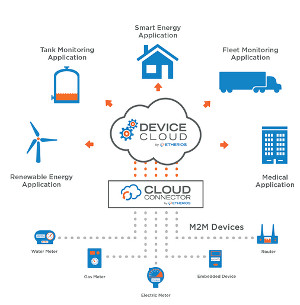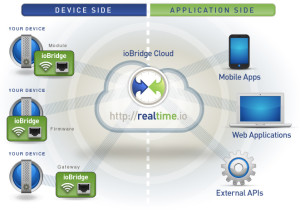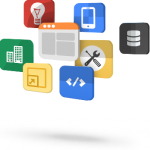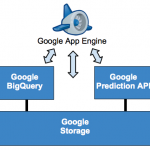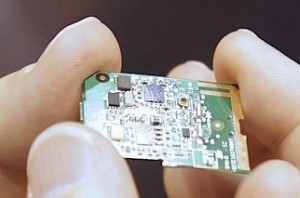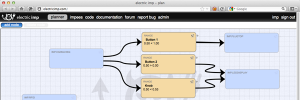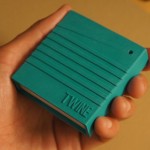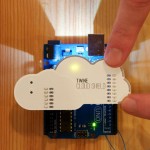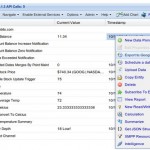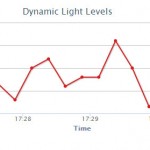The new Arduino Create platform aims to make embedded computing and Internet-of-Things development even easier, and an effort to make the popular Arduino development environment more relevant and up-to-date for today’s networked, connected Internet-of-Things applications – and to be easier to use for collaborative development and sharing of projects and open-source resources.
This new platform is intended to replace the widely used and proven Arduino IDE that many people will be familiar with. This system has been around for a decade, with minor revisions along the way – however is basically the same original system, derived from the Wiring platform.
Over time the Arduino IDE has inherited many things, some good and some bad, from this underlying legacy of the Wiring platform – and the Arduino Create platform aims to replace this with a modern, flexible toolchain. One of the most significant changes is that this new development environment will be a Web-based platform, with all the advantages as well as challenges that go along with that.
More than 10 years ago, the Arduino project set out to develop easy-to-use tools to make physical computing accessible and simple, with a focus on open-source software and hardware. Today, the Arduino Create platform aims to continue to remain true to these values in order to bring the same outcomes to the world of Internet-of-Things development, bringing this technology into the hands of teachers, students and creative artists, making the technology accessible for everybody, and serving as “one stop shop for Makers”.
But this new browser-based internet-connected platform is not just a new development environment. It enables everybody, including students, hobbyists, makers and other non-expert users to not just write code easily but also to share their work.
Users can easily configure their hardware, install updates and patches that are easily managed in the cloud, such as support for different board hardware types, and extra software libraries, and connect their networked devices to the cloud, using Web-accessible dashboards and other Internet-based features.
This cloud-based approach includes some clever features, such as the ability to easily “hide” sensitive private API keys and passwords within your code when you share it, and automatically insert this kind of secure information into your code at the preprocessor stage, before the code is uploaded to your board.
Alongside these new development capabilities, the new platform’s focus on community, culture leadership and education around the emerging Internet-of-Things domain is clear. The Arduino “IoT Manifesto” sets out not only how Arduino will approach the Internet of Things, but also how they intend to develop tools for it as well as how they think other parties should approach the way they’re developing their own tools and services for the IoT.
Arduino Create makes it very easy to get started, featuring guided workflows to help easily configure Internet services and to help users through the process of installing the cross-browser plugin. Once the plugin is installed, you can get started writing code and uploading sketches to an Arduino board connected to your computer directly from your web browser, in a way that will be largely familiar on the surface to everybody who has ever used an Arduino.
On the surface the Arduino Web Editor looks a lot like the familiar IDE, only browser-based. All the standard libraries included with Arduino IDE installations are immediately available, along with support for all the standard Arduino hardware targets.
This makes usability easy for new users, with minimal transition required for users who are already familiar with the Arduino IDE. All the significant back-end changes are hidden underneath, with a largely familiar user experience.
The Create platform also includes the Arduino Cloud infrastructure, which allows you to connect your Arduino boards directly to the Internet with ease, using transport protocols such as MQTT to communicate from Arduino devices to Web services and to other devices.
The Arduino Cloud infrastructure as well as the Arduino Web Editor are powered by Amazon Web Services behind the scenes, with AWS IoT and AWS Lambda providing the Arduino Create platform with secure, reliable and highly scalable infrastructure, enabling the platform that enables makers to easily connect and manage their Arduino projects through the internet and the cloud.
Eventually the Arduino Cloud infrastructure will provide Arduino users with a one-stop-shop for Arduino-connected Web services, including real-time data display dashboards, streaming of data and database storage.
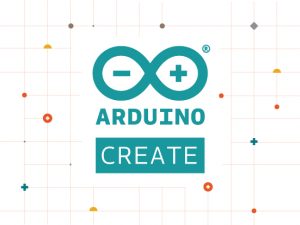 The community surrounding the Arduino platform is one of its defining characteristics, and the Arduino Project Hub integrated into the Arduino Create system aims to continue this community-oriented tradition.
The community surrounding the Arduino platform is one of its defining characteristics, and the Arduino Project Hub integrated into the Arduino Create system aims to continue this community-oriented tradition.
The huge amount of open-source code, examples and community support available around the Arduino platform mean that if you have a problem you can probably find somebody else that has had the same problem earlier that can easily help you solve it.
This ecosystem of community support is a key part of the Arduino success story – this has helped make Arduino the default platform for beginners and hobbyists looking to get started with microcontrollers and embedded computing.
The Arduino Create ecosystem builds upon this tradition with the integration of the Arduino Project Hub. The Arduino Project Hub is intended to be the new focus for the extensive community of Arduino users to share their projects, ideas and examples.
Although this may be an exciting development for the hobbyist community, it is not an ideal situation for those looking to design, build and manage their own commercial Internet-of-Things products. This is quite apparent with first use, thanks to the ominous “You may lose your data” warning.
Furthermore, there are many options on the hardware, software and platform fronts that require serious consideration – with security being paramount. Thus you need to discuss your IoT project with professionals from the LX Group.
We have end-to-end experience and demonstrated results in the entire process of IoT product development, and we’re ready to help bring your existing or new product ideas to life. Getting started is easy – click here to contact us, telephone 1800 810 124, or just keep in the loop by connecting here.
LX is an award-winning electronics design company based in Sydney, Australia. LX services include full turnkey design, electronics, hardware, software and firmware design. LX specialises in IoT embedded systems and wireless technologies design.
Published by LX Pty Ltd for itself and the LX Group of companies, including LX Design House, LX Solutions and LX Consulting, LX Innovations.


